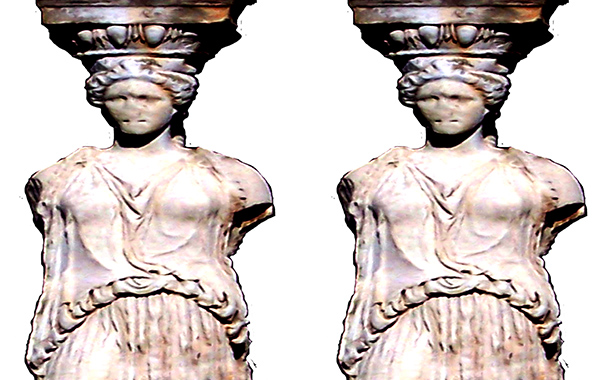<![CDATA[Archaeologists in Greece have recently discovered two female sculptures inside a tomb at Amphipolis, about 65 miles out from Thessaloniki. These female sculptures, also known as Caryatids, served as architectural support for many monuments in Greece. The Caryatids in Amphipolis were made of marble, with traces of blue and red paint on them. The excavation that dug up the sculptures was headed by Greek archaeologist Katerina Peristeri. The team happened on the discovery when sandy soil was removed in front of a sealing wall. Caryatids were used a lot in ancient Greece, the earliest examples have been found in the treasures of Delphi, and date back to the sixth century BC. Caryatids are thought to be based on earlier forms of structural support from Phoenicia and elsewhere in Greece. The most well known examples can be seen on the Erechtheion, at the Acropolis in Athens. There were six of them on the porch; one of which was removed in the early nineteenth century by Lord Elgin, and is now housed in the British Museum in London. The other five are now in the Acropolis Museum, and the Erechtheion is supported by replicas. The Romans copied these amazing structures, and made them into their own image. Peristeri and her team found the sculptures standing between two pillars, supporting a horizontal beam. Only one of the Caryatids has its face fully intact, but both were wearing earrings and had long thick hair covering their shoulders. What makes the find so fascinating is that the right arm of the western Caryatid and the left arm of the eastern one are outstretched, as if to say that no one should enter the mausoleum. This shows that the tomb's occupant was of particular importance, as very recently two headless sphinxes were also discovered guarding it. Sphinxes were a symbol of Macedonian queens from as early as the fourth century B.C. Even though they weren't often used at high-status burial sites, they guarded the tombs of two Macedonian queens in the royal cemetery at Aegae. Based on this and other research, some believe that the tomb at Amphipolis is of Olympias, the mother of Alexander the Great. Some fragments of the sculptures, such as parts of the hands and fingers, were found buried in the surrounding earth. At the bottom of the vault, the archaeologists found a 14-feet long rectangular marble block, with red, blue and yellow paint decorations that represent rosettes. The tomb of Alexander the Great's father, Philip II, had rosettes that strongly resemble the ones found in the tomb at Amphipolis. The rosettes decorate the edge bands of the gold coffin of his tomb. This adds even more credence to the idea that the tomb at Amphipolis belongs to Alexander the Great's mother, as the rosettes could have been a family symbol.]]>
Female Stone Sculptures Found in Greece
